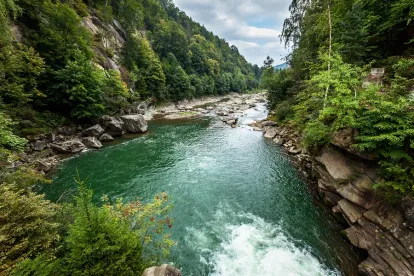Sturgeon v. Frost, et al., 872 F.3d 927 (9th Cir. 2017).
In September 2011, moose hunter John Sturgeon brought an action against the National Park Service (“Park Service”), alleging it inappropriately banned him from using a hovercraft to hunt moose on the Nation River in the Yukon-Charley Rivers National Preserve (“National Preserve”). Id. at 929. On remand from the Supreme Court, the decision analyzes which entity is permitted to decide this matter after the Supreme Court rejected an earlier circuit decision supporting the ban. The court’s ruling affirms congressional intent to permit Park Services authority to manage navigable waters in Alaska’s national parks, especially those parks meant to preserve wild rivers, and describes the balance between state and federal jurisdiction.
Sturgeon’s claims rested on the argument that the Nation River belongs to the state of Alaska, which permits the use of hovercraft on its waterways, and that the Alaska National Interest Lands Conservation Act (ANILCA) precluded the Park Service from regulating activities on state-owned lands and navigable waters within national parks. Id. at 929, 932. On remand from the Supreme Court, the Ninth Circuit Court of Appeals again affirmed the district court’s summary judgment in favor of the Park Service, stating the federal government properly exercised its authority to regulate or, in this case, prohibit the use of hovercraft upon the rivers within a conservation system. Id. at 936. Specifically, the court found that ANILCA and prior case law provided the United States with an implied reservation of water rights, which rendered the Nation River within the purview of the National Preserve’s “public land” and subject to its regulation. Id.
The Submerged Lands Act released and relinquished all of the federal government’s right, title, and interest in the land adjacent to and beneath the New River to the state of Alaska when it attained statehood. Id. at 933. But, as the court pointed out, lands submerged beneath inland waterways are distinct from the waterways themselves. Id. at 932. Under the Submerged Lands Act, “[t]he United States retains all its navigational servitude and rights in and powers of regulation and control of [submerged] lands and navigable waters for the constitutional purposes of commerce, navigation, national defense, and international affairs.” Id.
Prior case law analyzed the United States’ interest in navigable waters in Alaska under the reserved water rights doctrine. Id. at 933. Under this doctrine, when the federal government “withdraws its land from the public domain and reserves it for a federal purpose,” the government impliedly “reserves appurtenant water then unappropriated to the extent needed to accomplish the purpose of the reservation.” Id. The reserved right in unappropriated water vests on the date of the reservation and is superior to the rights of future appropriations. Id. As pointed out by the court, “‘[t]he United States has reserved vast parcels of land in Alaska for federal purposes through a myriad of statutes,’ including ANILCA, and thereby has ‘implicitly reserved appurtenant waters, including appurtenant navigable waters, to the extent needed to accomplish the purposes of the reservations.’” Id. The court, bound under precedent, determined that because the body of water at issue is “actually situated within the boundaries of federal reservations,” it is “reasonable to conclude that the United States had an interest in such waters for the primary purposes of the reservations.” Id. at 934.
After finding the United States had an implied reservation of water rights with regard to waters within the National Preserve in Alaska, which thereby rendered the Nation River “public land” as defined by ANILCA and subject to Park Service regulations, the court then emphasized President Carter’s reservation of the National Preserve prior to the enactment of ANILCA. Id. at 934–35. Per this reservation, the National Preserve was to be managed “for the protection of . . . historical, archeological, biological, [and] geological . . . phenomena,” including habitat for “isolated wild populations of Dall sheep, moose, bear, wolf, and other large mammals.” Id. The court determined the Park Service’s prohibition of hovercraft, which can provide virtually unlimited access to park areas and introduce a mechanical mode of transportation into locations where the intrusion of motorized equipment by sight or sound is generally inappropriate, is consistent with congressional intent. Id. at 935. Specifically, the hovercraft ban serves the purpose of keeping waterways in their undeveloped natural condition to protect wildlife habitat. Id.
In a concurring opinion, Circuit Judge Nelson states this case has “has nothing to do” with the reserved water rights doctrine and should have been addressed under the Commerce Clause. Id. at 937. Even under the Commerce Clause, the concurrence is of the opinion the federal regulation of Alaska’s navigable water is proper. Id. at 938.




 />i
/>i

